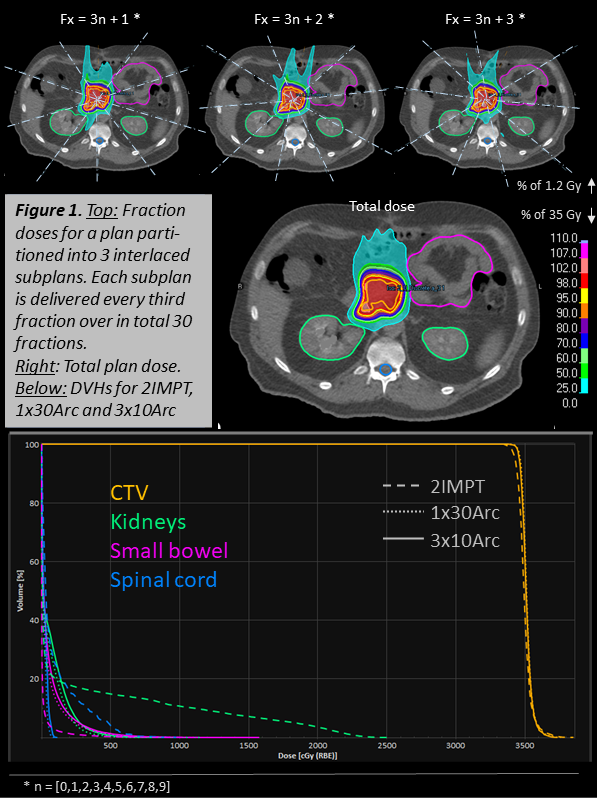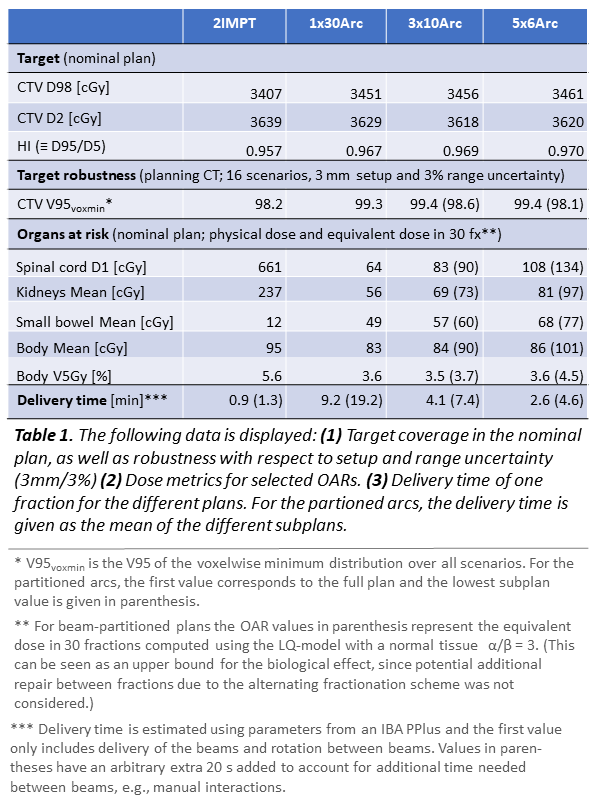Efficient delivery of discrete proton arcs using a beam-partitioning approach over fractions
PO-1965
Abstract
Efficient delivery of discrete proton arcs using a beam-partitioning approach over fractions
Authors: Erik Engwall1, Otte Marthin1, Viktor Wase1, Johan Sundström1, Lars Glimelius1, Albin Fredriksson1, Henrik Melbéus1, Victor Mikhalev1, Björn Andersson1, Rasmus Bokrantz1
1RaySearch Laboratories, Research and Development, Stockholm, Sweden
Show Affiliations
Hide Affiliations
Purpose or Objective
Proton arcs have shown great potential to increase target conformality and reduce the dose to organs at risks (OARs). For delivery time reasons, the primarily considered regime is dynamic arcs, where the dose to the patient is delivered while the gantry is rotating. However, no treatment machine is yet able to deliver in dynamic arc mode and additional dosimetric uncertainty is added when delivering during rotation. Discrete arcs, where step-and-shoot delivery is used over a large number of beams, can overcome these problems at the cost of longer delivery times. To exploit the dosimetric advantages of proton arcs, while achieving a reasonable delivery time for discrete arcs, we propose a beam-partitioning approach over fractions that can be efficient enough on most treatment machines.
Material and Methods
We used a research version of RayStation 12A to produce one 2-beam (155° and 205°) intensity modulated proton therapy plan (2IMPT) and three discrete arc plans for a pancreatic cancer patient. The arc plans were planned with 30 beams spread equidistantly over the full revolution. One of the arc plans delivers all beams in all 30 fractions (1x30Arc), while two plans use beam partitioning to distribute the beams over 3 x 10 fractions (3x10Arc; see Figure 1) and 5 x 6 fractions (5x6Arc), respectively. The resulting beam-partitioned subplans, each consisting of 10 or 6 beams, were planned to be delivered in an alternating mode to allow for longer normal tissue repair in regions where the beams enter. All plans were robustly optimized (3% range and 3 mm setup uncertainty) to achieve robust target coverage with a uniform dose of 117 cGy in every fraction. The OAR objectives are related to the total dose over all fractions. The plans were evaluated with respect to target coverage (nominal scenario and 16 perturbed scenarios), OAR dose and delivery time. To account for spreading the dose differently in alternating fractions for the beam-partitioned plans, an equivalent dose in 30 fractions was constructed using the LQ-model with α/β = 3.

Results
Table 1 shows that the target coverage is improved for all arc plans compared to 2IMPT. Target robustness is similar for all plans and retained in every fraction for the beam-partitioned plans. Dose to OARs was in general reduced for the arc plans, especially for the spinal cord and the kidneys. However, splitting the arc over multiple fractions comes at the cost of higher OAR doses, which is even more pronounced when estimating the equivalent dose in 30 fractions. The gain can instead be seen in the delivery time, which is substantially reduced in the beam-partitioned plans.

Conclusion
Beam-partitioned arc plans can provide improved plan quality compared to IMPT, while reducing delivery times compared to full arc plans. This technique could pave the way for introduction of proton arc delivery at the clinics with existing delivery machines.